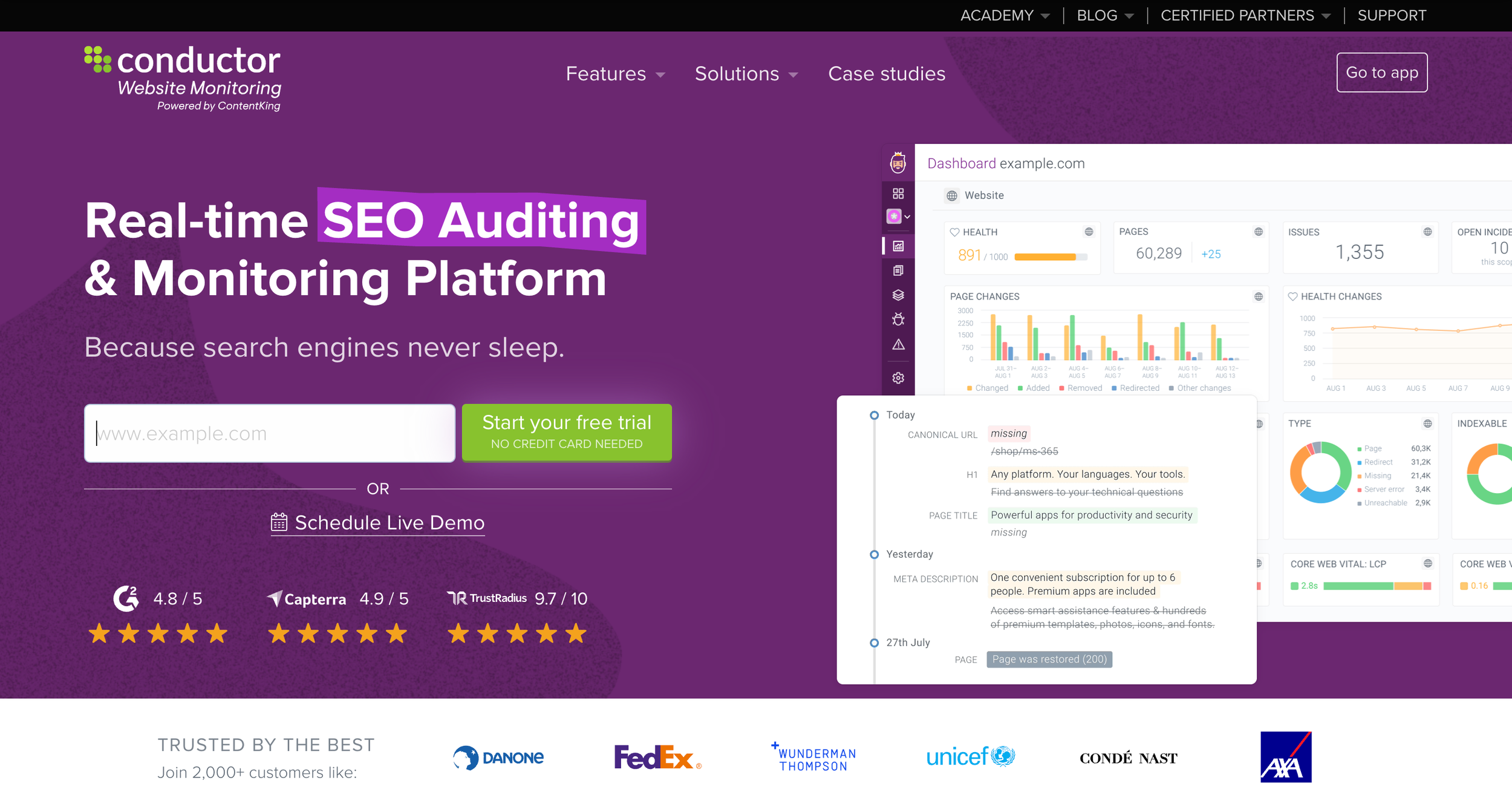The Content Audit: How Startups Can Evaluate What's Working (and What's Not)
You're hustling to build your startup, juggling a thousand tasks, and the last thing you want to do is spend precious time examining content you've already created.
But that pile of blogs, landing pages, and social posts you've been churning out? They're either driving your growth or they're digital deadweight. And if you don't know which is which, you're essentially throwing darts blindfolded.
The good news? There’s a very powerful tool you can leverage – the content audit.
A strategic content audit is the difference between a content strategy that powers exponential growth and one that burns through your runway with nothing to show for it.
Keep reading to find out exactly how to perform a content audit for your startup ⬇️
What exactly is a content audit?
A content audit is the systematic process of evaluating ALL your content assets to determine what's performing, what's flopping, and where the golden opportunities are hiding. Think of it as a health check-up for your digital presence – it might not be the sexiest task, but it's how you prevent major problems and unlock serious growth.
For startups specifically, content audits are game-changers because they:
Prevent resource waste – When every pound counts, you can't afford to keep investing in content approaches that aren't delivering results
Identify hidden winners – Discover which content pieces are secretly driving conversions so you can double-down on what's working
Map content gaps – Spot the missing pieces in your buyer's journey that are causing potential customers to drop off
Convert more prospects – Optimise your existing content to turn more visitors into leads and more leads into customers
Boost SEO performance – Identify low-hanging fruit for ranking improvements that can dramatically increase organic traffic
57% of B2B marketers cite creating the "right" content for their audience as one of their top challenges. A proper audit solves this by showing you exactly what resonates with your audience.
When to conduct a content audit
For maximum ROI, run a content audit when:
Your startup is scaling – What worked at seed stage might not work at Series A
Before a major rebrand or website redesign – Don't blindly throw out high-performing content
After significant algorithm updates – When search engines change the rules, you need to adapt
Quarterly for fast-moving startups – The digital landscape shifts too quickly to wait a full year
When you notice conversion rates dropping – A symptom that your content might not be connecting
👀 Content audits are particularly crucial after major Google algorithm updates like helpful content updates or core updates.
The step-by-step content audit process
Ready to dig in? Here's your roadmap to content audit success:
Step 1: Define your audit goals
Before you dive into spreadsheets, get crystal clear on what you're trying to achieve:
Increasing organic traffic?
Boosting conversion rates?
Improving content relevance?
Enhancing user experience?
Identifying repurposing opportunities?
Each goal requires different metrics and action plans. Don't try to solve everything at once – prioritise based on your startup's most pressing needs.
➡️ Start with the end in mind. If your goal is to boost conversions, begin by auditing your highest-traffic pages that have below-average conversion rates – that's where the biggest opportunities usually hide.
Step 2: Take inventory (the foundation of your audit)
This is where the rubber meets the road. Create a comprehensive spreadsheet that includes:
URL of each content piece
Content type (blog post, landing page, whitepaper, etc.)
Publication date
Target keyword(s)
Word count
Current status (published, updated, archived)
💡 Use tools like Screaming Frog or Semrush to automate this process – it'll save you days of manual work.
Step 3: Gather the metrics that actually matter
Not all data points are created equal. For startups, these metrics deliver the most actionable insights:
Traffic metrics:
Organic traffic
Direct traffic
Referral traffic
Social traffic
Traffic growth/decline over time
Engagement metrics:
Average time on page
Bounce rate
Pages per session
Social shares
Comments/interactions
Conversion metrics:
Conversion rate
Generated leads
Lead quality
Assisted conversions
Revenue attribution (if possible)
SEO metrics:
Keyword rankings
Backlinks
Internal links
Search visibility
Core Web Vitals performance
Don't just collect metrics – contextualise them. A 75% bounce rate on a how-to article that fully answers the user's question isn't bad. But the same bounce rate on a product comparison page likely indicates a problem. Track these metrics month-over-month to identify trends and seasonal patterns. 🙌
Step 4: Analyse and categorise
Now for the fun part – sorting your content into action categories:
Keep: High-performing content that's driving consistent results. No major changes needed beyond regular factual updates. These are your content workhorses.
Update: Content with good potential but needs refreshing. Think outdated stats, broken links, or opportunities to improve SEO. These pieces have unrealised potential.
Merge: Similar content pieces that could perform better as one comprehensive resource. Identify content cannibalisation and consolidate for topical authority.
Repurpose: Content with valuable information that could work better in a different format (turn that wordy guide into an infographic or that webinar into a blog series). These have solid substance but need a new package.
Remove: Poor-performing content that doesn't align with your current strategy or provides no value. Be ruthless here – digital clutter hurts your SEO.
Refresh: Content that performed well historically but is showing declining metrics. Often these just need updating with fresh information, examples, or statistics.
Reoptimise: Content targeting the right topics but missing key optimisation opportunities. These need technical SEO improvements.
➡️I recommend using a scoring system. Assign each piece a score from 1-5 based on traffic, conversions, and backlinks. Then average the scores to create a data-driven prioritisation system for your content efforts.
Step 5: Map your content gaps (and spot the opportunities)
With your analysis complete, look for patterns and gaps:
Buyer journey mapping: Which stages (awareness, consideration, decision) lack content?
Keyword opportunity analysis: Which high-value keywords have weak or no content coverage?
Audience segmentation gaps: Which buyer personas or audience segments aren't adequately served?
Content format diversity: Which formats (video, infographics, guides) are underrepresented?
Topic cluster assessment: Which pillar topics need more supporting content?
Competitive content comparison: What topics are competitors ranking for that you're missing?
Search intent matching: Which keywords have content that doesn't match user intent?
Content freshness evaluation: Which topics need updated perspectives or information?
This gap analysis is often the most valuable output of your audit – it's your content roadmap for the next quarter.
The most successful content strategies don't just fix what's broken – they aggressively fill identified gaps.
Create a prioritised content creation plan based on:
Keyword difficulty vs. business value
Resource requirements
Audience demand signals
Competitive advantage opportunity
Projected ROI timeline
The best tools to supercharge your content audit
The right tools make content audits significantly faster and more insightful:
For collecting content:
Screaming Frog – The gold standard for crawling websites and gathering URLs
Semrush – Offers a dedicated content audit tool that integrates with Google Analytics
Google Search Console – Provides search performance data for each page
ContentKing – Real-time SEO auditing and change tracking
Sitebulb – Provides visual, intuitive website audits with content insights
For analysing performance:
Google Analytics – Essential for traffic and conversion tracking
Ahrefs – Excellent for backlink analysis and keyword tracking
Clearscope – Helpful for content optimisation and relevance assessment
Hotjar – Heatmaps and session recordings to understand user behavior
Frase – AI-powered content optimisation using competitive analysis
For tracking actions:
Google Data Studio – For creating shareable dashboards of your content performance
ClickUp – Project management with custom workflows for content teams
ContentCal – Editorial calendar and content planning tool
For competitive analysis:
SpyFu – Reveals competitors' top-performing content and keywords
BuzzSumo – Identifies the most shared content in your industry
💡 Don't try to use every tool at once. Start with the basics – Google Analytics, Search Console, and one comprehensive SEO tool like Semrush or Ahrefs. Add specialised tools only when you have specific questions that these core tools can't answer.
How to prioritise your post-audit actions
Don't try to tackle everything at once. Instead, use this framework to prioritise:
Quick wins – High-impact, low-effort changes (like fixing broken links or updating CTAs on high-traffic pages)
Update meta titles and descriptions on top-10 organic landing pages
Fix broken links and images on high-traffic pages
Add internal links from high-authority pages to strategic content
Improve page load speed on conversion-focused pages
Update outdated statistics in otherwise solid content
Strategic updates – Moderate-effort changes to high-potential content (refreshing outdated statistics, improving keyword targeting)
Expand thin content on topics with rising search volume
Reoptimise underperforming content targeting valuable keywords
Update content experiencing traffic decline (content decay)
Add missing sections based on competitor analysis
Enhance visual elements in text-heavy but valuable content
Content gaps – Creating new content for identified opportunities based on your gap analysis
Develop content for high-volume, low-competition keywords
Create content addressing unique customer pain points
Build out cornerstone content for important topic clusters
Develop content for underserved audience segments
Create conversion-focused content for high-traffic topics
Major overhauls – Complete rewrites or consolidations of underperforming but strategically important content
Consolidate overlapping content causing keyword cannibalization
Rewrite outdated cornerstone content on core topics
Transform unsuccessful long-form content into different formats
Overhaul conversion pathways on key landing pages
Restructure content architecture for better user experience
💡 Apply the 80/20 rule to your content audit. Often, just updating your top 20% of traffic-driving pages can deliver 80% of the potential gains. Start there, measure results, then proceed to more labor-intensive tasks.
How often should your startup conduct content audits?
The ideal frequency depends on your content volume and industry pace:
High-volume publishers (10+ pieces monthly): Quarterly mini-audits, biannual comprehensive audits
Medium-volume publishers (4-9 pieces monthly): Biannual mini-audits, annual comprehensive audit
Low-volume publishers (1-3 pieces monthly): Annual comprehensive audit
But remember these special circumstances that might trigger off-schedule audits:
After a funding round or strategic pivot
Following major Google algorithm updates
Prior to growth marketing campaigns
When entering new market segments
During team or leadership transitions
💡 Mini-audits can be extremely valuable for startups with limited resources. Focus on just your top 20% of traffic-driving pages and your top 20% of conversion-driving pages each quarter. This targeted approach delivers much of the value without the full time investment.
What qualitative factors should you evaluate?
While data drives many audit decisions, don't neglect these qualitative factors:
Brand alignment – Does the content reflect your current messaging and values?
Voice consistency – Does the content maintain a consistent tone across pieces?
Visual coherence – Do design elements follow your current brand standards?
Accuracy – Is all information factually correct and up-to-date?
Accessibility – Can users with disabilities access your content?
How to make content audits a regular part of your startup's growth strategy
The most successful startups don't treat content audits as one-off projects but as integral parts of their growth strategy:
Schedule regular audit dates in your marketing calendar
Create content performance dashboards for ongoing monitoring
Train team members on interpretation and action steps
Document your process for efficiency and consistency
Test and measure the impact of your post-audit changes
How to incorporate competitive analysis to your content audit
Want to take your audit to the next level? Incorporate competitive analysis:
Identify 3-5 key competitors
Analyse their top-performing content (topics, formats, keywords)
Compare engagement metrics where available
Identify their content gaps (opportunities for your brand)
Benchmark your content performance against theirs
This competitive layer provides context for your performance and highlights untapped opportunities.
The bottom line
The most successful startups I've worked with don't see content audits as administrative tasks – they recognise them as the foundation of data-driven marketing that delivers measurable ROI. They use audits to eliminate guesswork, double-down on what's working, and create content that genuinely serves their audience and business goals.
So yes, content audits take time. But the alternative? Flying blind with your content strategy while your competitors gain the data-driven edge.
Ready to transform your startup's content strategy with a proper audit but need expert guidance? I meticulously craft strategic content audits and actionable recommendations for startups looking to scale. Let's chat about how I can help you turn your content into a genuine growth driver.




